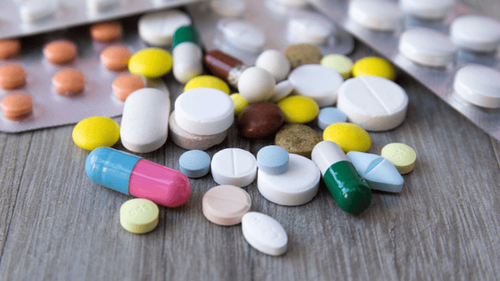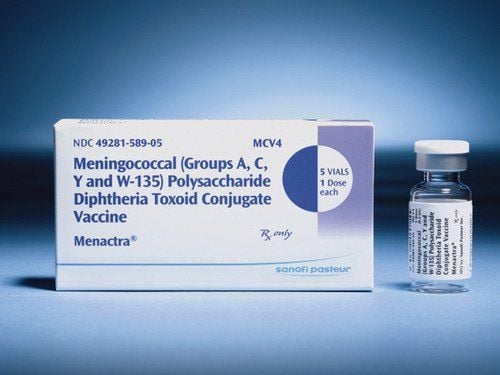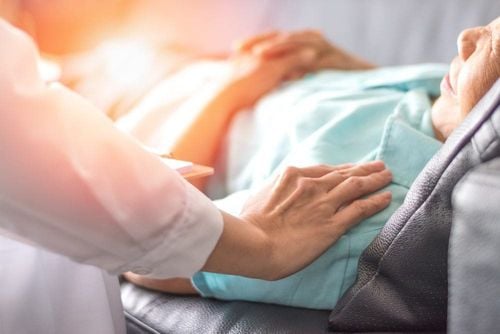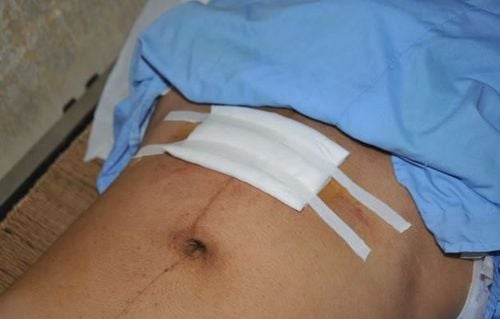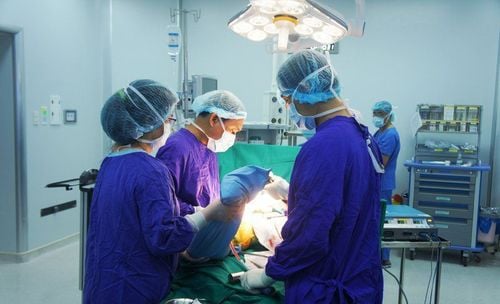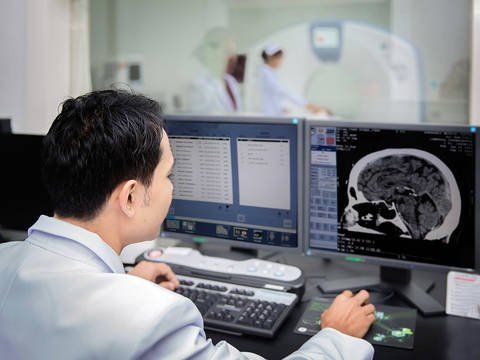This is an automatically translated article.
Article written by Doctor Do Anh Vu - Department of General Surgery - Vinmec Central Park International General Hospital
Caring for patients after craniocerebral surgery is similar to general care for neurosurgery patients. However, some cranial surgery patients have specific requirements and care to ensure the fastest recovery possible.
1. After craniotomy to remove brain tumor
Many patients take some time to return to their preoperative level of consciousness after a craniotomy, due to the effects of anesthesia and palpation on brain parenchyma. Current anesthetic agents allow for a rapid recovery, but there are transient changes in mental status during the first few hours with or without new focal neurological signs. These usually resolve within the first few hours, but it is important to have clear instructions from the surgeon. Any abnormality from the patient's baseline should be reported to the surgeon. Accordingly, imaging techniques such as CT or MRI may be required for definitive results.
It is also important that patients are well-hydrated, but care must be taken not to overload those undergoing brain tumor surgery, as they tend to have postoperative cerebral edema. As a general rule, 2 liters every 24 hours is enough. Patients who have had aneurysm surgery will require at least 3 liters every 24 hours to maintain circulatory volume, prevent vasospasm, and maintain cerebral perfusion.
Daily urine glucose testing should be performed for patients receiving dexamethasone (patients having surgery for brain tumors). If the urine test is positive for glucose, blood glucose should be monitored. Hyperglycemia disrupts the blood-brain barrier, increasing cerebral edema. Insulin is often used to lower blood glucose levels to normal.
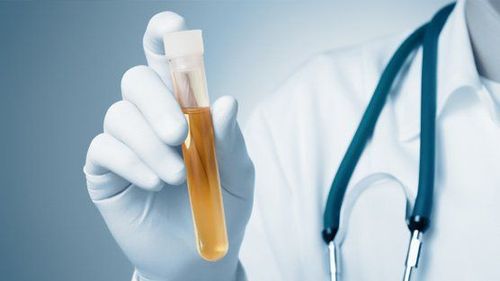
Bệnh nhân cần được xét nghiệm glucose nước tiểu hàng ngày
2. After craniotomy, decompression
Pay attention to the site of the ostomy: this should be clearly documented in the patient notes and tight dressings should be avoided. Patients who have undergone a hemispherical craniotomy should not have compression bandages on the missing skull for the first 48 hours. This can inadvertently affect the brain parenchyma, increasing ICP. The patient should be rotated every two hours, but with the skull on the bed. The craniectomy site must be observed for surface changes, such as bulging (sign of increased pressure), inflammation, and CSF leakage. Any change in surface or drainage from the incision must be reported to the surgeon immediately.
For minor craniotomy surgeries, the patient does not need any special protection, but both the patient and the family should be aware of the craniofacial defect upon discharge. For larger craniofacial resections, especially those above the temporal-parietal area, a temporary helmet may be worn prior to discharge. Cranioplasty should be done within six months.
3. After posterior fossa surgery
Pay attention to the assessment of respiratory function due to the risk of dysphagia and respiratory problems. Swallow assessment is required before allowing oral administration. If the patient is judged to be unable to drink, the patient continues to receive intravenous injection and nasogastric tube feeding to avoid aspiration pneumonia.
If facial nerve paralysis is present, special attention should be paid to eye care. Eye drops will be used, usually Hypromellose is the most commonly used and may be required as often as hourly to relieve soreness. Long-acting ointments are used to lubricate the eyes at night to prevent frequent awakenings. A thin screen is used at night to protect the cornea from drying out. However, this net should not be worn all day because the humid environment that grows underneath can increase infection. Patients should be educated about eye care prior to discharge. Protect your eyes with regular glasses that will protect your eyes from dust when outdoors. If facial paralysis is severe, external suture treatment of the upper and lower eyelids may be necessary.
4. After surgery for transsphenoid pituitary adenoma
Prophylactic hydrocortisone is used before anesthesia or after surgery to avoid hypopituitarism. Blood cortisol levels are checked three/four days after surgery and if high, hydrocortisone should be discontinued. As an outpatient, if hydrocortisone is to be continued, it is necessary to measure blood cortisol levels which must be checked regularly.
Patients should be made aware of the signs of CSF fistula, i.e. postnasal drip, such as discharge when moving the head forward and a salty taste in the mouth, instructed to advise the nursing staff if this happens. The presence of CSF can be confirmed by a positive test for glucose. CSF leaks must be carefully monitored due to the risk of infection and subsequent meningitis. Persistent leaks may need to be treated with temporary lumbar drainage to let the CSF go about its normal course. In the event of failure, surgical repair of the CSF fistula may be required.
Accurately record fluid balance because transient diabetes insipidus is a common problem following surgery. If urine output exceeds 200 mL/hr for two consecutive hours (catheterization) or more than 800 mL in four hours and urine densities <1.005, serum and urine samples should be submitted to determine osmolarity. dialysis and serum sodium to see if the patient has diabetes insipidus. after surgery or not.
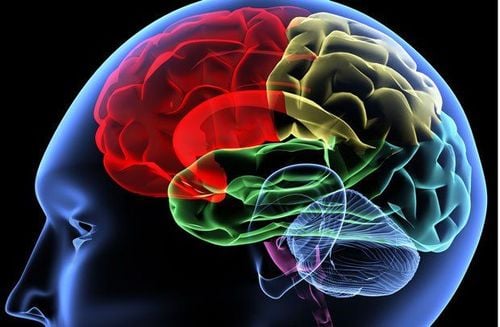
Rò rỉ CSF có thể gây viêm màng não
5. After oral surgery
These patients will be in intensive care after surgery. Patients with oral surgery can be intubated through the nose or have active tracheostomy, and patients with maxillofacial surgery will be selected for tracheostomy. Both groups of patients will be on mechanical ventilation for at least 24-48 hours. Postoperative re-intubation can be difficult due to anatomical problems or instability of the neck and also carries the risk of affecting the healing of intraoral wounds.
The patient will be placed a nasogastric tube after surgery, regardless of whether the person is on a ventilator or not, to ensure adequate nutrition in the first days due to swelling of the incision. In particular, patients need to pay attention to oral care. Use mouthwash as often as a soft toothbrush to avoid damage to the oral mucosa.
A lumbar drain was inserted during surgery to minimize postoperative CSF leakage and was removed after 5 days in the absence of complications. Patients must be advised not to blow their nose for up to 10 days after surgery. This can aggravate CSF leaks or can also push air from the sinuses under the skin and cause swelling around the eyes.
Craniocerebral surgery is a major surgery, so the post-operative care process plays an important role in recovery and minimizing complications for the patient.
Vinmec International General Hospital is the address for examination, prevention and treatment of many diseases specializing in neurosurgery. With a team of qualified, qualified medical professionals and a system of modern equipment, perfect medical services will ensure that the examination, diagnosis, treatment and recovery processes all take place according to the correct procedure. , method brings satisfaction to customers.
Customers can directly go to Vinmec Health system nationwide to visit or contact the hotline here for support.
In April & May 2021, when there is a need for examination and treatment of Traumatic Brain Injury at Vinmec Phu Quoc International Hospital, customers will enjoy double incentives:
- Free specialist examination and Received the Rehabilitation Package
- Reduce 50% of the cost for customers with a prescription for post-examination treatment. The program is limited to the corresponding technique of each hospital and to customers who perform this treatment technique for the first time at Vinmec.
Please dial HOTLINE for more information or register for an appointment HERE. Download MyVinmec app to make appointments faster and to manage your bookings easily.




